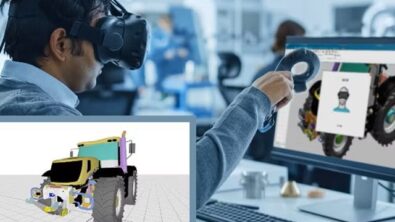Validating a sustainable design

Picking the conversation around sustainable design back up from conceptual design, supplier networks, and detailed design, it is time to talk about validating your work. Verification and validation are not new concepts to any OEM. Validating a sustainable product simply means applying the requirements for sustainability that were outlined earlier in development. The important distinction is that validating the requirements of a sustainable product means looking at far more information from all across the supplier network and life of the product.
Within the realm of validation, there are essentially three areas of interest – the material properties and product performance, the simulations used during development, and usage from the field. Not all of the associated processes flow neatly from design, but all of them eventually feed back into the digital twin of the product and process. For example, a material property error flagged during a simulation can have an immediate impact through a design change while a long-term durability problem would be flagged after production to influence the next revision of the product design.
That clarifier in mind, let’s dive into the important of validating material properties during design. Understanding the benefits or weaknesses of a material, geometry, or component as early as possible is vital to designing any successful product. Doing so for sustainability requires that these assessments are made with a wider set of variables, which is why digitalization is critical. A validation check at the end of a simulation might show a part is stronger than it needs to be, but the manufacturability and the environmental impact need to be understood before deciding to lightweight the part with topology optimization or another process. A part easily made from common stock can be a better decision compared to an additively manufactured part – it depends on the interactions of the complete system. And this example might sound eerily similar to detailed designed, but that is because validation is a continuous process. It happens across every stage of development.
But when a designer relies so heavily on simulation capabilities and models of how their product will perform, it is important to ensure the simulations and models accurately reflect the physical world being approximated. The simulation and testing of a product is often outlined early in design so that workflows can be planned around these sometimes-lengthy processes. Other times reduced order models are called for to get rough approximations of a design without the computing costs of full simulations. Whatever the route, it is important to validate that both the results are accurate and that simulation and testing plans uncover the correct information for designers. A well understood material for instance may not need as much simulation time as a novel one, but either way it is important to understand the value (lost or gained) from these decisions.
Validation extends far beyond the design of an individual product, into its usage life in the field. This idea is most commonly associated with personal electronics, and increasingly automobiles, with over the air (OTA) updates. The goal is to understand the use of the product in reality compared to the designer’s intentions and it can also apply to revisions of a product, not only the software. Validating the dynamics of a product in the field can help companies reduce recalls and extend the life of their products. But this data collection also informs the next iteration of a product by linking the real-world testing to the models used during development. For sustainable products this can mean extending the lifetime of parts, making wear-components easier to replace, or even readjusting the requirements of the product to better fit the market needs.
Depending on the product, validation processes can be employed in real time. Information streaming in from a wind array could be used to better collect wind energy from the system by pitching blades or rotating the structure to better face prevailing winds. Longer-term data could also help define the maintenance procedures for the turbines with more frequent cleanings or different component materials if the salty air is corroding vital systems faster than expected.
Validation is a very powerful process if used in conjunction with digitalization and other critical design concepts. To understand how it fits into a wider story, you might want to check out the previous instalments of this series with concept design, supply chain creation, and detailed design. Or you can check out our website for even more information on sustainability.
Siemens Digital Industries Software helps organizations of all sizes digitally transform using software, hardware and services from the Siemens Xcelerator business platform. Siemens’ software and the comprehensive digital twin enable companies to optimize their design, engineering and manufacturing processes to turn today’s ideas into the sustainable products of the future. From chips to entire systems, from product to process, across all industries. Siemens Digital Industries Software – Accelerating transformation.
For more information on Siemens Digital Industries Software products and services, follow us on LinkedIn, Twitter, Facebook and Instagram.


